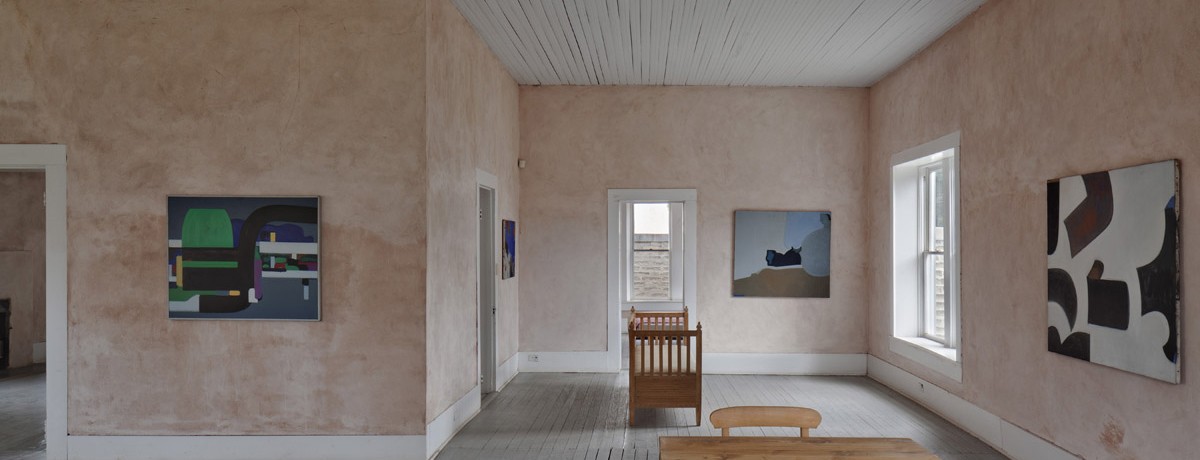

Donald Judd studied painting at the Art Students League of New York from 1948 to 1953, his paintings from the mid-1950s onward saw a series of stylistic transitions. The oil paintings he made between 1956 and 1958 feature broad, irregular shapes that are neither strictly organic nor geometric. The paintings he made between 1959 and 1962 feature map-like planes and surfaces that emphasize texture through the addition of sand and wax. In this later period, Judd also made paintings that could be described as reliefs, adding found objects that projected from Masonite surfaces.
Judd’s early interest in landscapes, found in his high school drawings in pastels, extended into his paintings through the mid-1950s in which a number of works include impressions of bridges and roads. As Thomas Kellein wrote in the exhibition catalogue for Donald Judd: Early Works 1955-1968, “Over a period of more than two years until 1958, the bridge motifs gave way to garden pictures with which he later installed at the Cobb House in Marfa, Texas.”
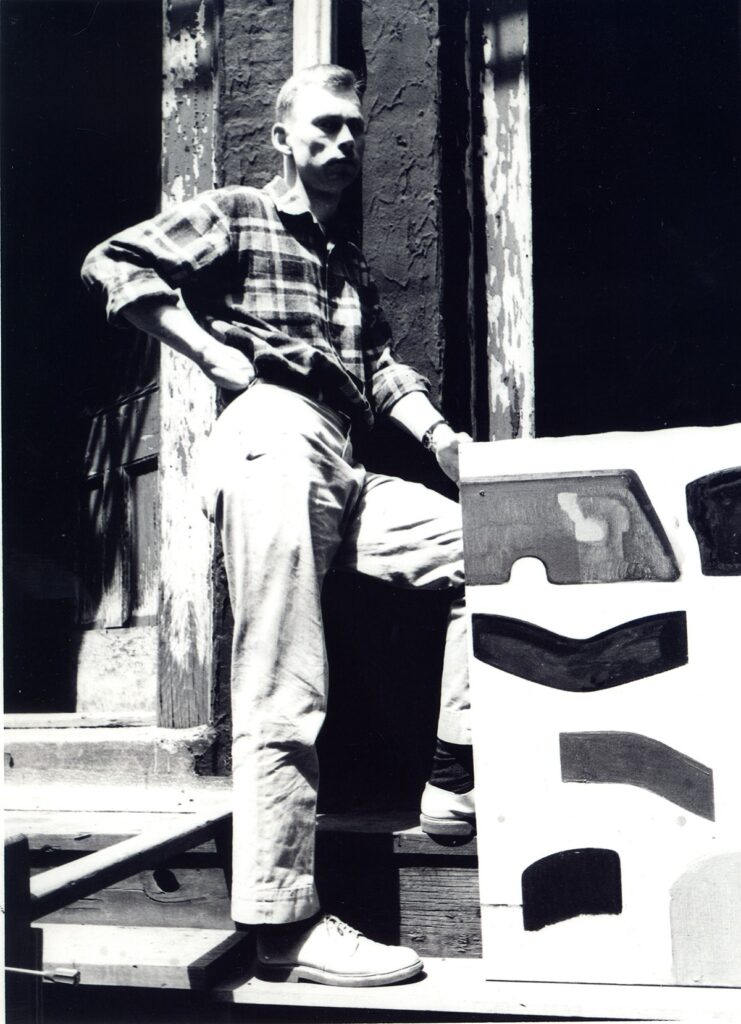
Donald Judd. Photo: John Jerome
As Marianne Stockebrand described in the 2004 catalog for Judd’s retrospective at the Tate Modern, “By 1960 Judd had freed his canvases of any lingering remnants of representation; they were reduced to just a few elements…Wavy lines wend their way through these seas of colour, without any obvious scheme, but clearly intended to articulate the plane and to hold it together as a pattern would.” At the same time, these new lines, shapes, and forms were consistent with the forms that were developing in Judd’s printmaking. Shapes from the paintings found their way into the prints and vice versa.
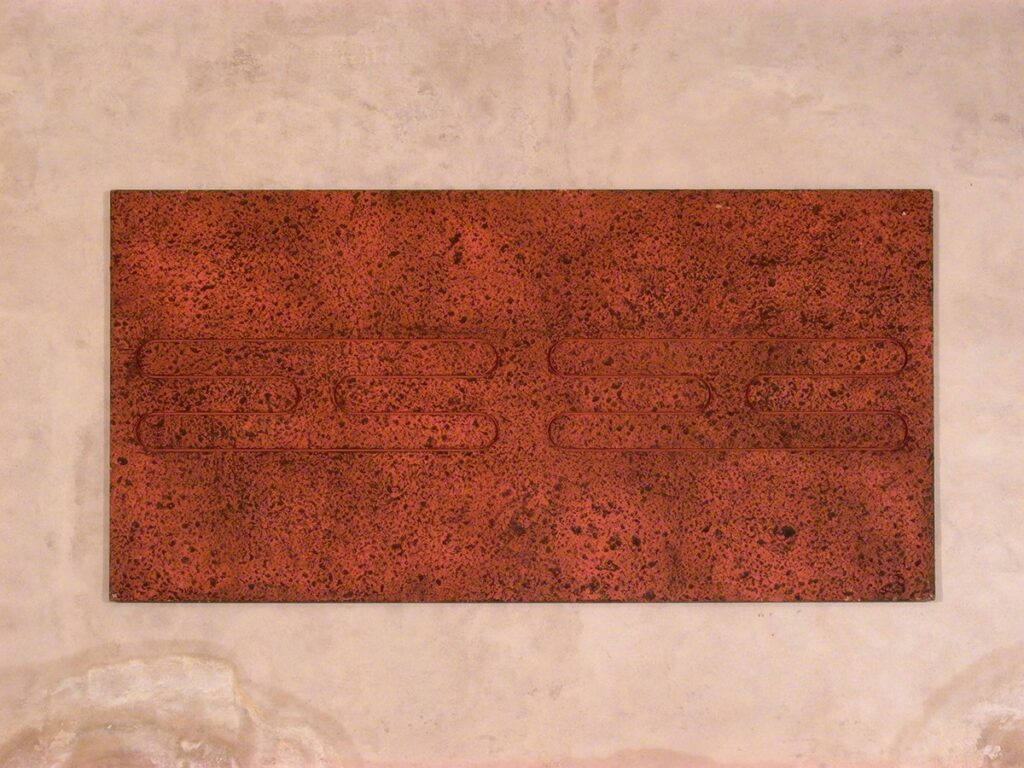
Donald Judd, untitled, 1961, Liquitex and sand on plywood, with routed lines, 48 x 96 in
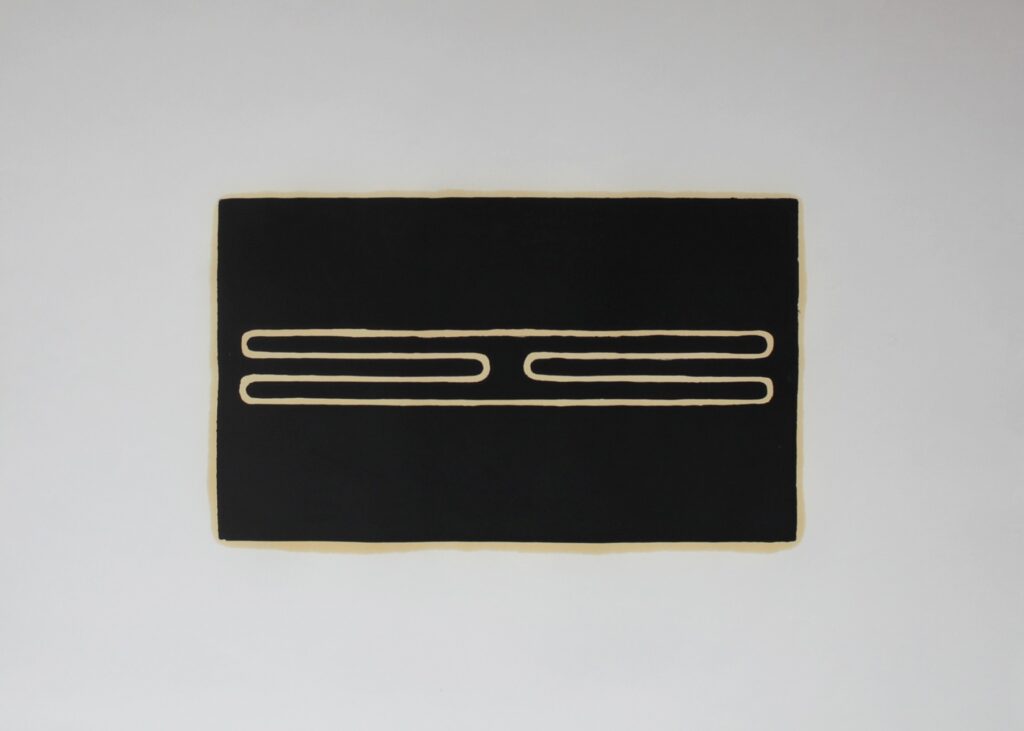
Donald Judd, untitled, 1961-1978, woodcut in ivory black on offset paper, 22 x 30.5 in
In a 1971 interview with John Coplans, senior curator of the Pasadena Art Museum from 1967-1970, held on the occasion of the exhibition Don Judd (May 11-July 4, 1971), Judd spoke directly to both developments in his painting and to the shift from painting to work in three dimensions:
JC: There is a progressive development from a flat, painterly surface to relief.
DJ: Two things were going on in the painting: some of the earlier ones were organic and had curved lines; secondly, they were illusionistic to some extent, and I very steadily got tired of both things and tried to get rid of spatial illusionism, but I couldn’t get rid of it. So even in a painting like the red one with the gray stripes, painted in 1961, which is just all surface, there is still a spatial play around the lines.
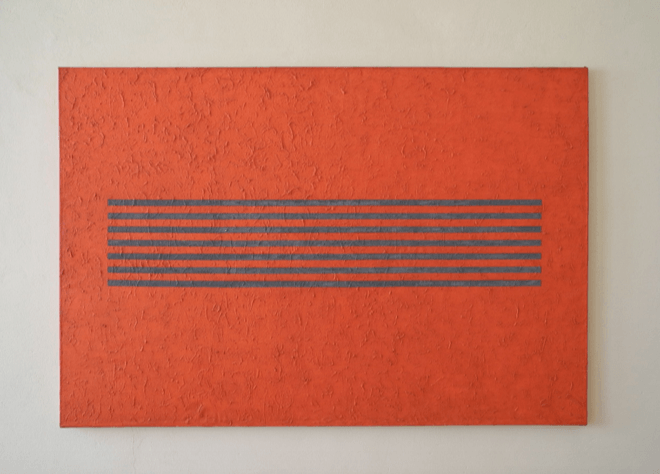
Donald Judd, untitled, 1962, oil and wax on canvas, 69 x 101 ¾ in
JC: By “spatial play” I suppose you mean figure/ground interrelationships, etc.
DJ: Yes. And one also had the problem that there were at least two things in the painting: the rectangle itself and the thing (image) in the rectangle, which is true even in Newman’s. You couldn’t get around that. The only paintings that didn’t have that kind of problem were Yves Klein’s—the blue paintings. But for some reason I just didn’t want to do monochrome paintings.
JC: So you moved progressively from painterly low reliefs into more dimensional work?
DJ: Yes, one of the first three-dimensional ones started off as a piece of canvas from a failed painting that I tried to turn up, but I couldn’t make the canvas turn up evenly. So after a while it occurred to me to change the material and use something that would curve naturally. I threw out the piece of canvas and replaced it with galvanized iron. The relief is galvanized iron and painted plywood.
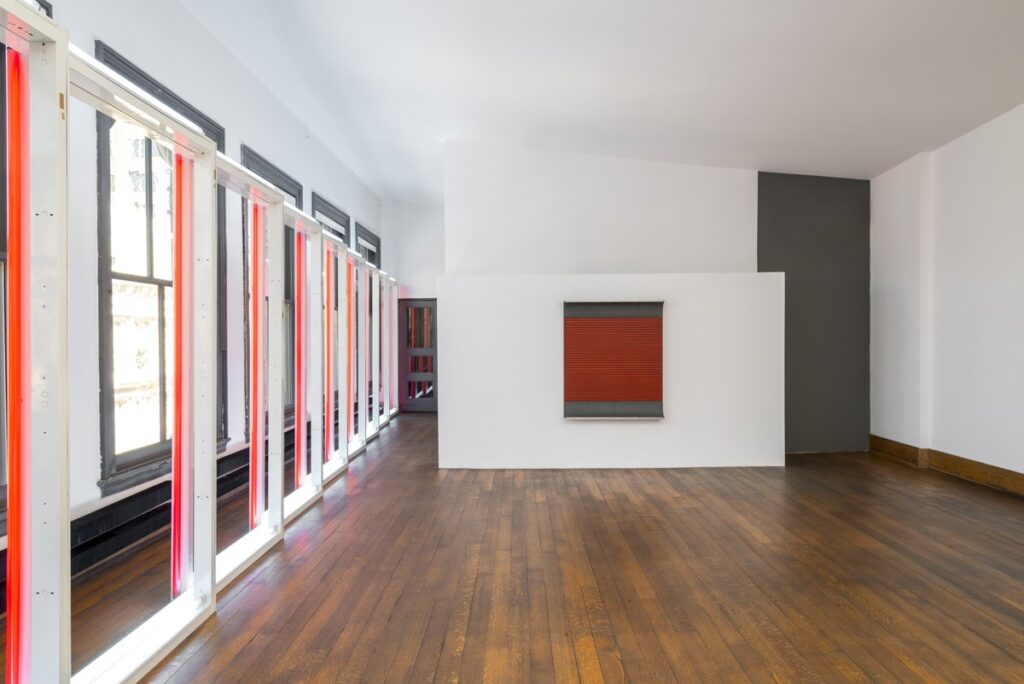
Donald Judd, untitled, 1963, Cadmium red light and black oil on wood with galvanized iron and aluminum, 50 x 42 x 5 ½, installed on the Fifth Floor of 101 Spring Street, New York. Photo: Joshua White, 2013
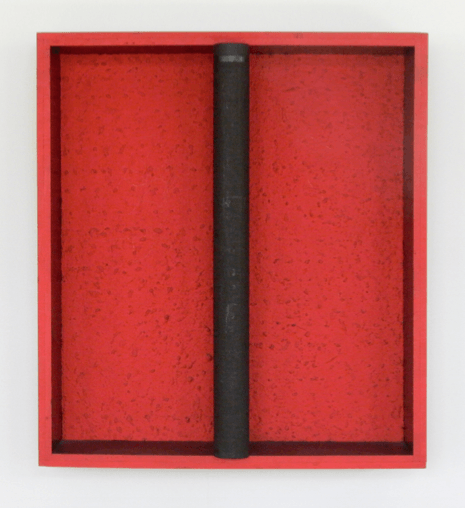
Donald Judd, untitled, 1962, Cadmium red oil, wax, and sand on canvas and wood, and black enamel on asphalt pipe, 50 1/2 x 45 x 9 5/8 in
It’s the first really three-dimensional relief. The one with the pipe is 1962. I went from low to high relief and then to free-standing works.
As Judd said, he was uninterested in ascribing “intrinsic meaning or superiority” to the shapes that he used, writing in 1967 in Art in America, that, “The main virtue of geometric shapes is that they aren’t organic, as all art otherwise is. A form that’s neither geometric or organic would be a great discovery.”
An understudied part of Judd’s work, his paintings are infrequently seen outside of Judd Foundation spaces in Marfa where he permanently installed his paintings from the mid-1950s to the early 1960s in the Cobb House, Whyte Building, and Architecture Studio including an exhibition at the Kunsthalle Bielefeld (May 5-July 21, 2002) that then traveled to The Menil Collection (January 31-April 27, 2003). On view through June, the exhibition Donald Judd: Paintings at the Institute of Contemporary Art, Miami presents 14 of Judd’s paintings created between 1959 and 1961.